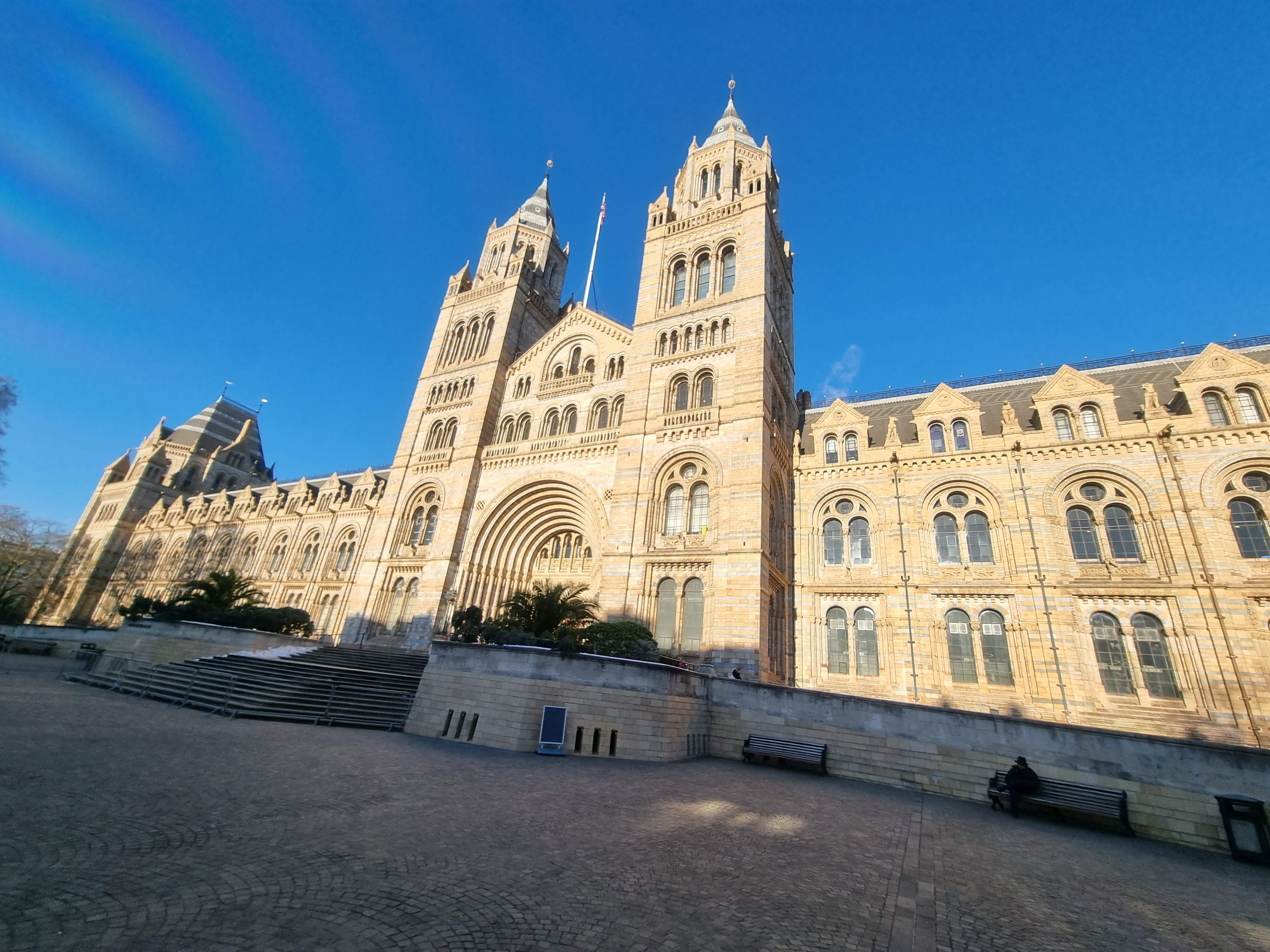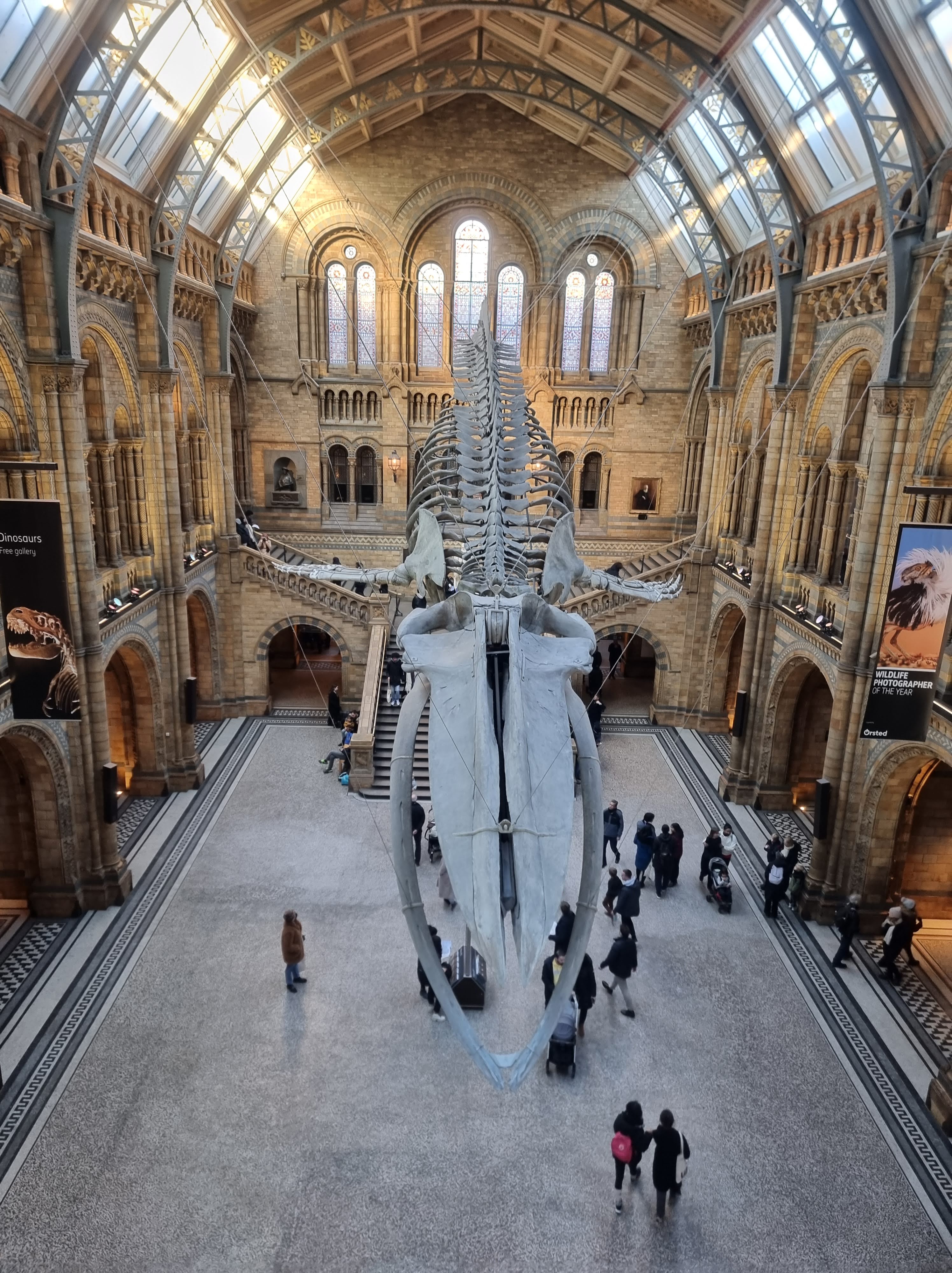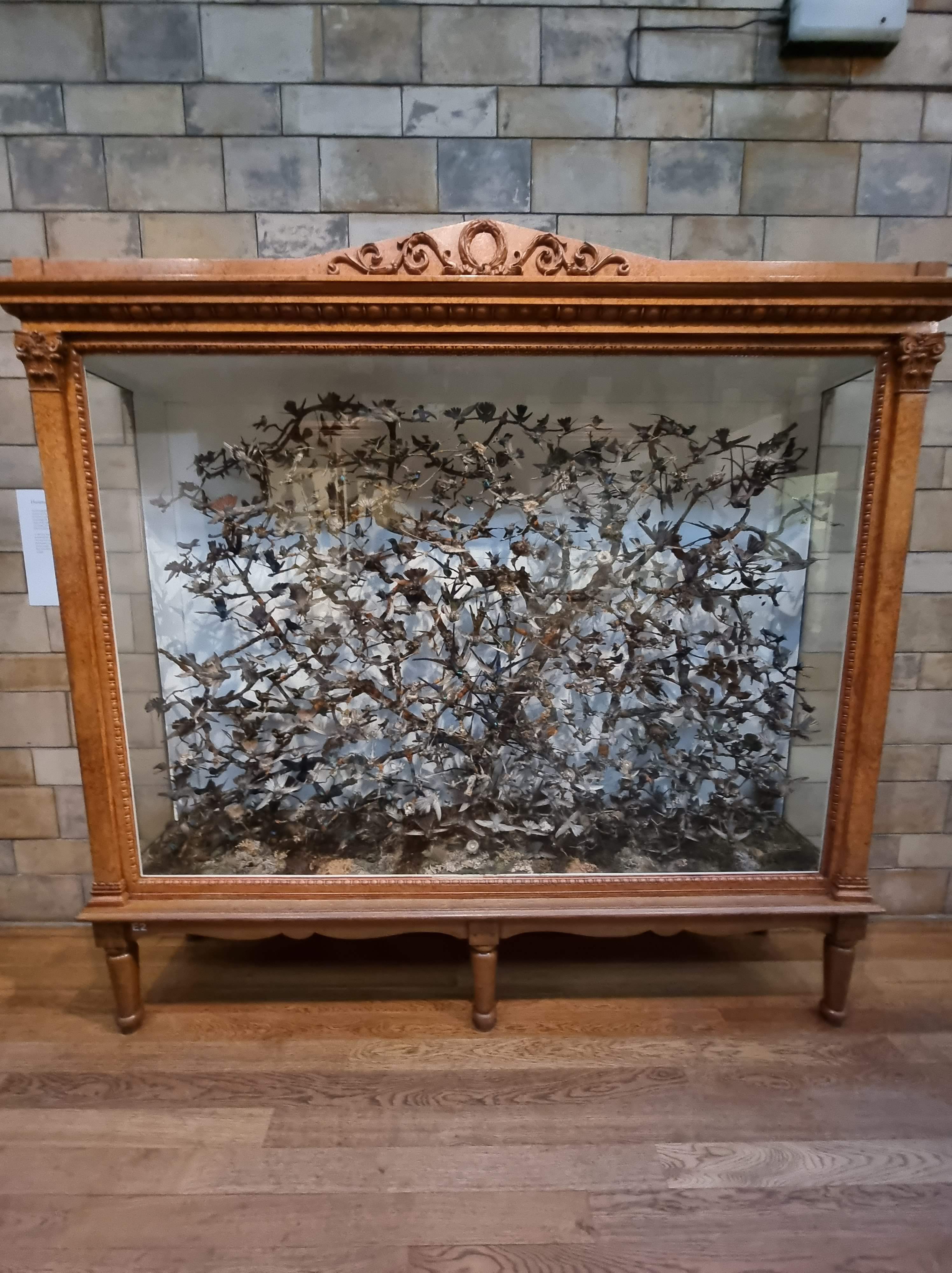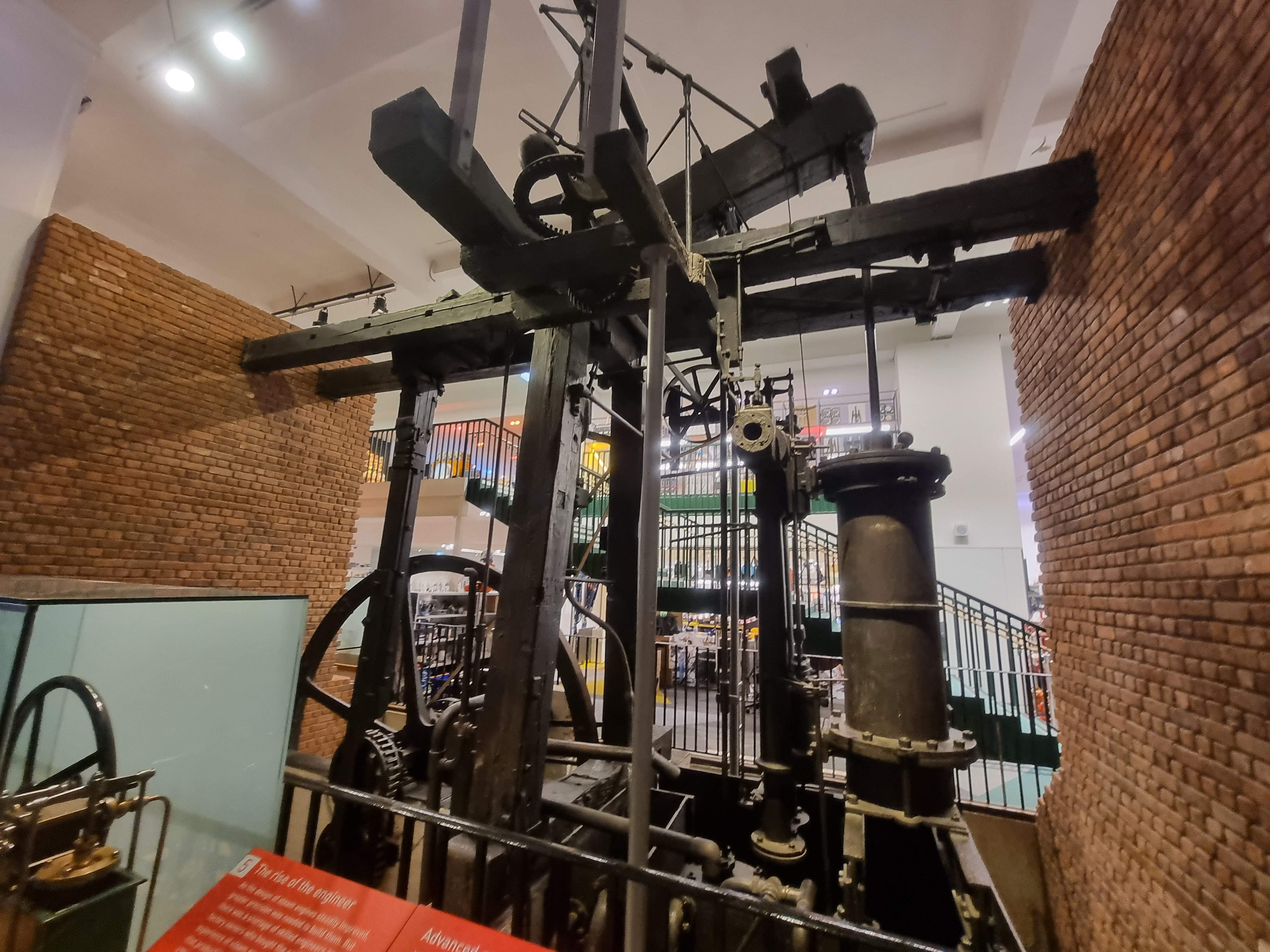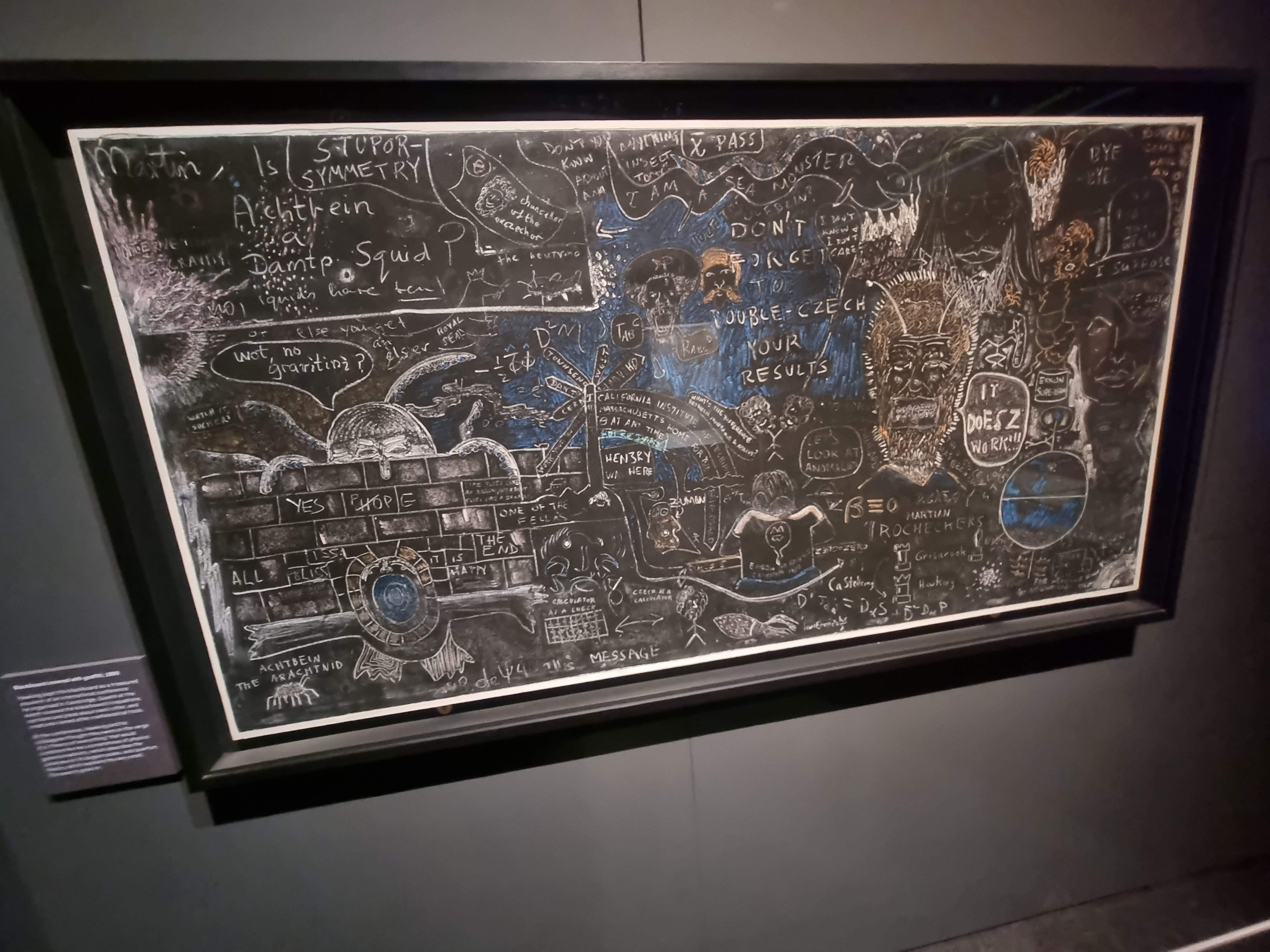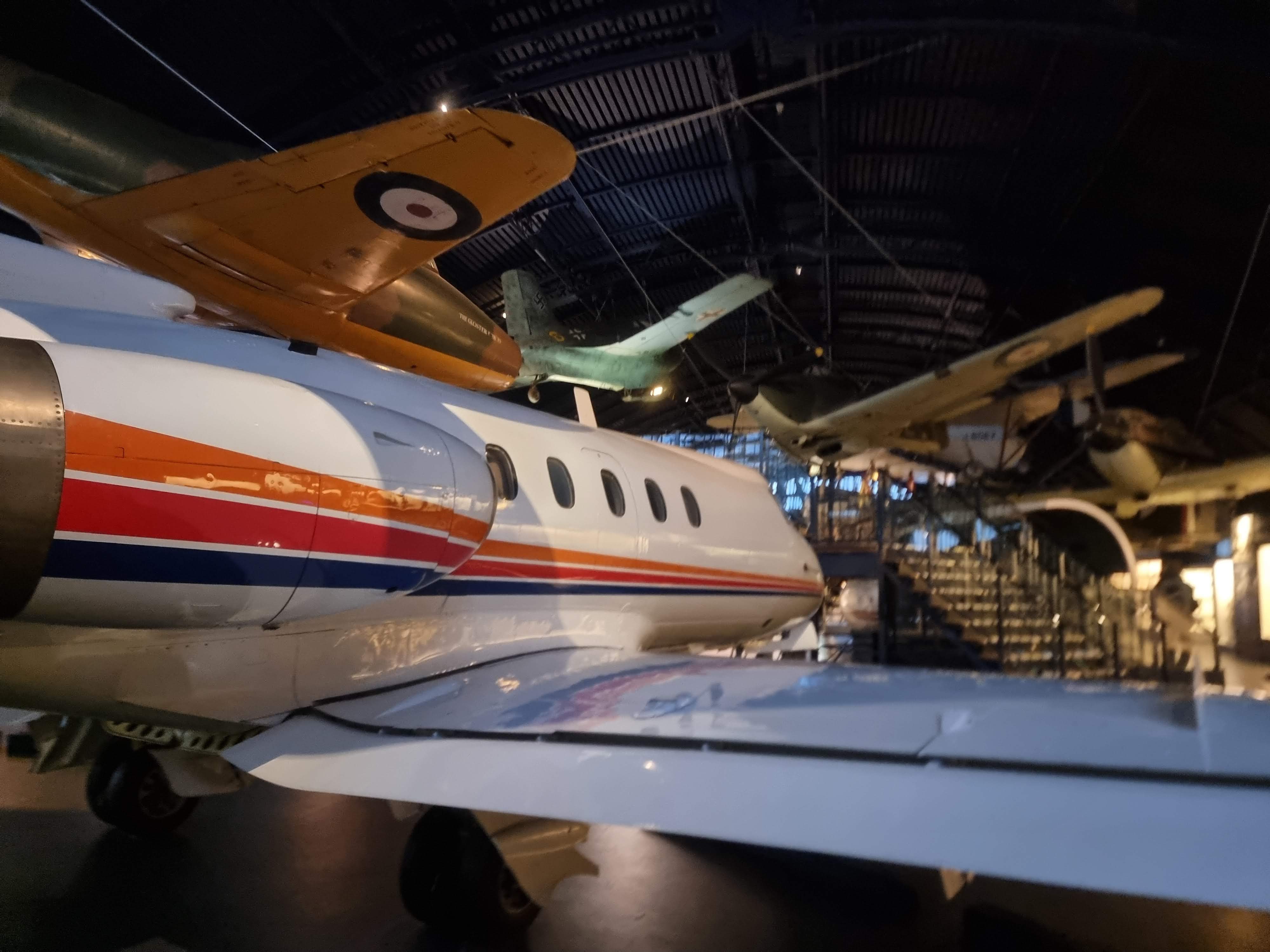Guildford is only a 35–40-minute train ride directly to the London Waterloo station. There are many trains every hour and it is quite convenient to travel between Guildford and London. As the capital of the country, London has a lifetime’s worth of places to see and things to do. In this article, I will mainly be focusing on two of the museums that I visited in London, both of which have free entrance and each takes roughly a full day to completely explore.
The first museum that I visited was the Natural History Museum that is located at South Kensington in London. The museum has more than 80 million objects, but a tiny fraction is on public display in the museum. There are many galleries in the museum, focusing on subjects such as dinosaurs, oceans and human evolution over a period of 4.6 billion years! As you can see in the image below, the museum is an architectural wonder from the outside, and looks more akin to a grand palace.
As I entered the museum, I was immediately captivated by the museums largest object hanging from the ceiling at the Hintze hall. It is the world-famous skeleton of a blue whale that first arrived in the museum in the 1880s. As the largest ever living animal on Earth, even the skeleton of the blue whale truly put my size as a human into perspective. It truly was humongous!
Another truly spectacular exhibition that I managed to visit just before it closed was the nation’s favourite dinosaur, Dippy. It is the massive and complete replica skeleton of a Diplodocus carnegii dinosaur which was gifted to the museum in 1905. It is roughly 25 metres long and has a huge neck and wicked tail. It truly puts to scale just how large dinosaurs could grow.

There is a gallery dedicated to stuffed birds in the museum, many of which are now extinct in the wild. One of the hummingbird cabinets here, with 100s of different species of hummingbirds, the world’s smallest birds, caught my attention as it looked like timeless art. Unfortunately, over time, many of the little birds had discoloured, and yet, the cabinet fascinated me due to the utmost care and precision it must have taken to find all those birds and create this masterpiece. This cabinet was originally created in the 1880s.
The second museum that I visited was the Science Museum which is located right next to the Natural History Museum. Personally, this was my favourite museum and I wish I spent more time in here than I did. I am hoping to return and explore this museum one more time, since London is just one train ride away from Guildford!
A major part of the first floor was dedicated to James Watt, who was a Scottish inventor, engineer and chemist who invented steam engines and for whom the unit of Power is named, reminding me of the adage “Watt is the unit of power”. There were many engines and inventions featured, showing the golden era of the industrial revolution. It also showed the evolution of power generation in the UK over centuries.
One other gallery that I want to highlight at the Science Museum is the gallery dedicated to Stephen Hawking, the world-famous physicist who discovered that black holes emit radiation which can be detected by special instrumentation. This gallery even included a motorised wheelchair that he used as well as notebooks and memorabilia by him. It was a truly inspiring display of a man that has inspired so many into the field of theoretical physics.
Lastly, there was also a gallery dedicated to aviation, from the ancient, failed invention of wings for gliding, to the aeroplanes made by the Wright brothers, as well as modern aeroplanes used today. This gallery even included some suspended small planes that were hanging from the ceiling as display, and giant engines that power these marvellous mechanised beasts!
There are many more free, as well as paid museums that can be visited in London, and I hope to write a part 2 after visiting more of the many museums that are in London!
Cheers,
Shaulan

